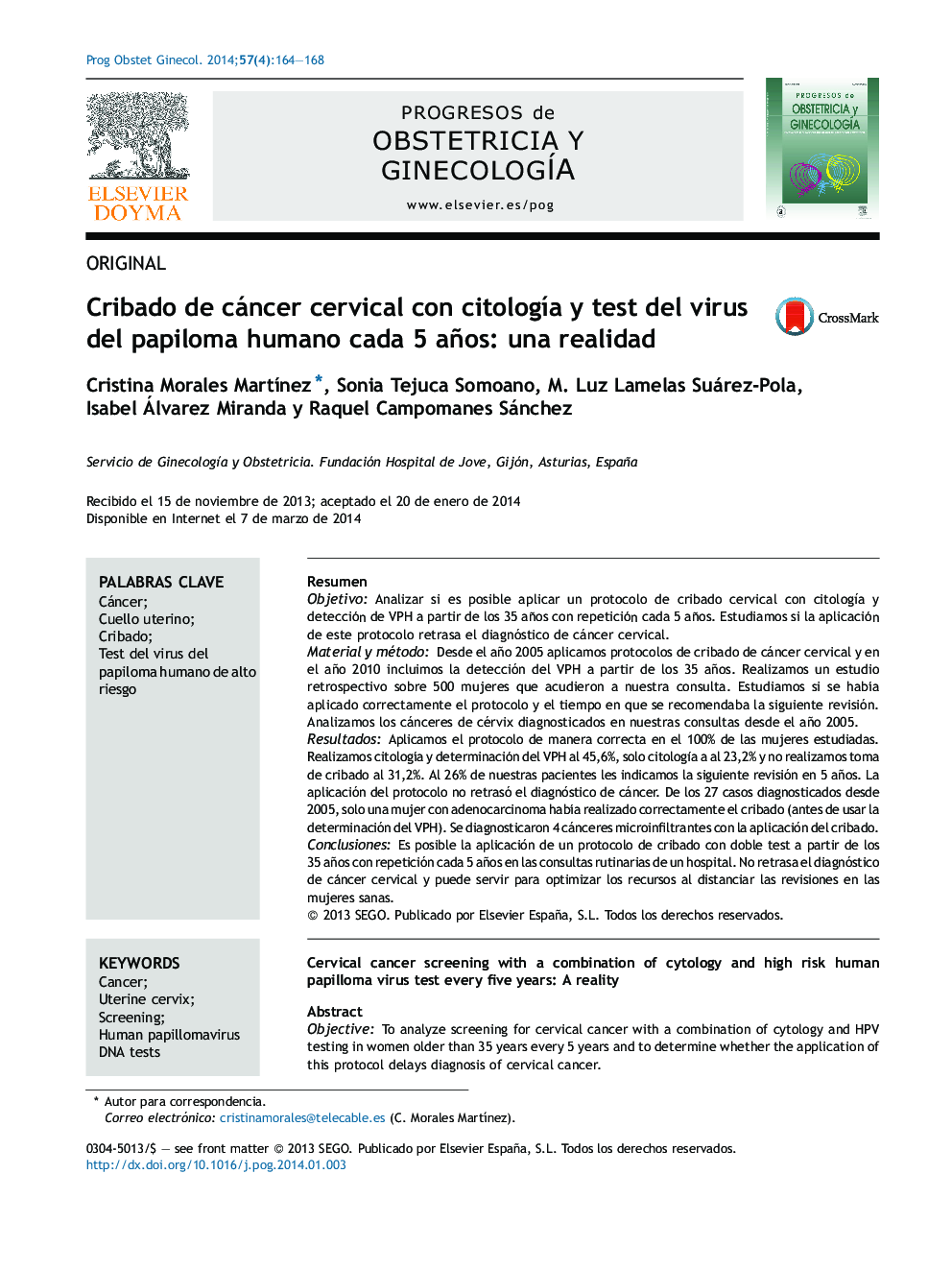| Article ID | Journal | Published Year | Pages | File Type |
|---|---|---|---|---|
| 3968643 | Progresos de Obstetricia y Ginecología | 2014 | 5 Pages |
ResumenObjetivoAnalizar si es posible aplicar un protocolo de cribado cervical con citología y detección de VPH a partir de los 35 años con repetición cada 5 años. Estudiamos si la aplicación de este protocolo retrasa el diagnóstico de cáncer cervical.Material y métodoDesde el año 2005 aplicamos protocolos de cribado de cáncer cervical y en el año 2010 incluimos la detección del VPH a partir de los 35 años. Realizamos un estudio retrospectivo sobre 500 mujeres que acudieron a nuestra consulta. Estudiamos si se había aplicado correctamente el protocolo y el tiempo en que se recomendaba la siguiente revisión. Analizamos los cánceres de cérvix diagnosticados en nuestras consultas desde el año 2005.ResultadosAplicamos el protocolo de manera correcta en el 100% de las mujeres estudiadas. Realizamos citología y determinación del VPH al 45,6%, solo citología a al 23,2% y no realizamos toma de cribado al 31,2%. Al 26% de nuestras pacientes les indicamos la siguiente revisión en 5 años. La aplicación del protocolo no retrasó el diagnóstico de cáncer. De los 27 casos diagnosticados desde 2005, solo una mujer con adenocarcinoma había realizado correctamente el cribado (antes de usar la determinación del VPH). Se diagnosticaron 4 cánceres microinfiltrantes con la aplicación del cribado.ConclusionesEs posible la aplicación de un protocolo de cribado con doble test a partir de los 35 años con repetición cada 5 años en las consultas rutinarias de un hospital. No retrasa el diagnóstico de cáncer cervical y puede servir para optimizar los recursos al distanciar las revisiones en las mujeres sanas.
ObjectiveTo analyze screening for cervical cancer with a combination of cytology and HPV testing in women older than 35 years every 5 years and to determine whether the application of this protocol delays diagnosis of cervical cancer.Material and methodsCervical cancer screening strategies have been applied in our hospital since 2005. HPV testing was introduced in 2010 for women older than 35 years. We performed a retrospective study of 500 women attended in our hospital. We studied whether we had correctly applied the strategy and the recommended time interval of the next review. We analyzed cervical cancers diagnosed in our hospital since 2005.ResultsThe strategy was correctly applied in 100% of the women. Screening was performed with both cytology and HPV testing in 45.6% and with cytology alone in 23.2%; no screening was performed in 31.2%. The recommended interval until the next review was 5 years in 26% of the patients. The implementation of the strategy did not delay the diagnosis of cancer. Cervical cancer was diagnosed in 27 women since 2005. Only one woman with adenocarcinoma had been correctly screened (before the introduction of HPV testing). In the last 2 years, four microinvasive carcinomas were diagnosed with this strategy.ConclusionsA combination of cytology and HPV testing can be applied in women older than 35 years and screening intervals can be increased to 5 years in routine clinical practice. This protocol does not delay the diagnosis of cervical cancer and optimizes resources by lengthening the interval between screening tests in healthy women.
